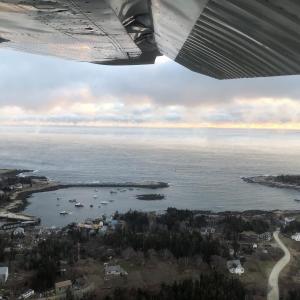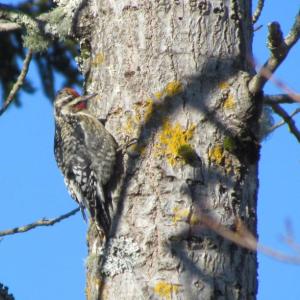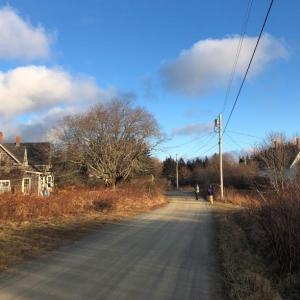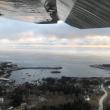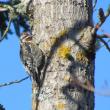A Winter Adventure on Matinicus Island
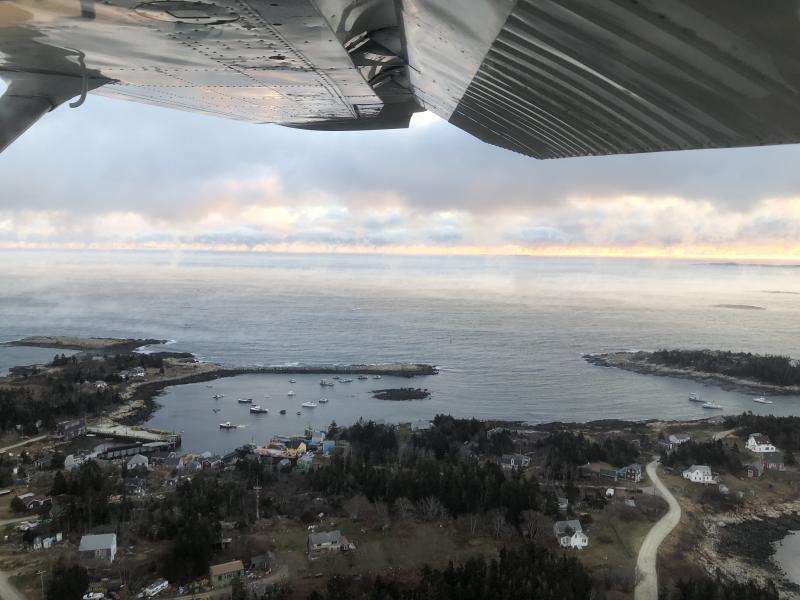 Jeff Wells started doing an official National Audubon Society Christmas Bird Count on Matinicus Island in the 2005-2006 season. For 16 years, he’s been taking the air taxi from Owls Head to the island for a day of bird counting. Courtesy of Jeff Wells.
Jeff Wells started doing an official National Audubon Society Christmas Bird Count on Matinicus Island in the 2005-2006 season. For 16 years, he’s been taking the air taxi from Owls Head to the island for a day of bird counting. Courtesy of Jeff Wells.
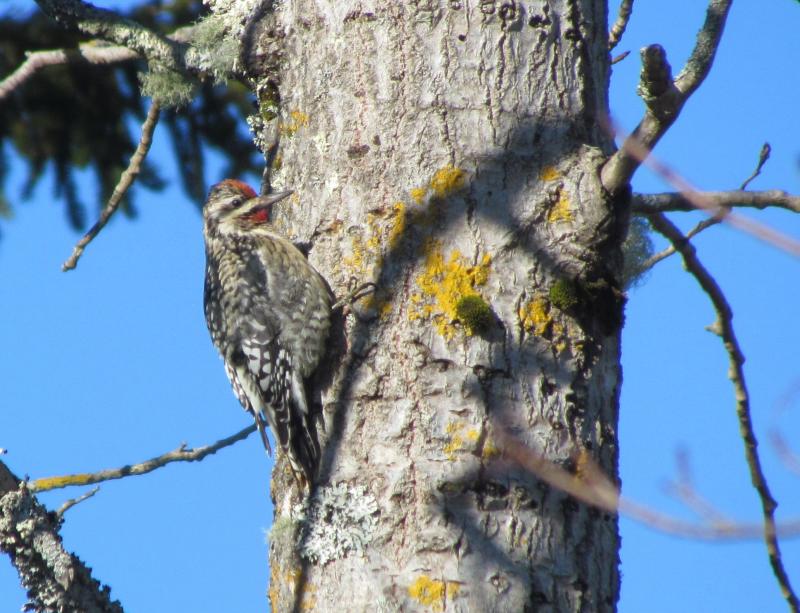 During this year’s count, Jeff and his two fellow birders tallied 43 species including 4 that were new to count. This yellow-bellied sapsucker was one of them. Courtesy of Jeff Wells.
During this year’s count, Jeff and his two fellow birders tallied 43 species including 4 that were new to count. This yellow-bellied sapsucker was one of them. Courtesy of Jeff Wells.
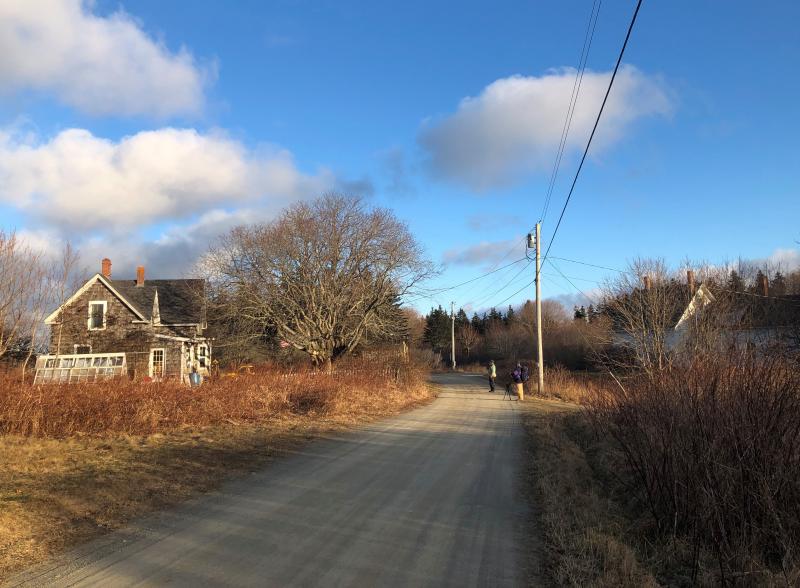 Although the temperatures were frigid, the opportunity to see birds in a beautiful place was enough to keep the author and his fellow birders warm. Courtesy of Jeff Wells.
Although the temperatures were frigid, the opportunity to see birds in a beautiful place was enough to keep the author and his fellow birders warm. Courtesy of Jeff Wells.
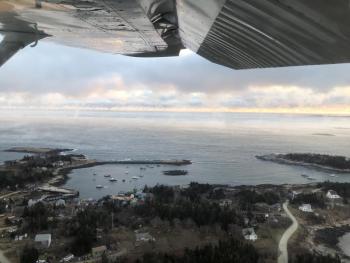 Jeff Wells started doing an official National Audubon Society Christmas Bird Count on Matinicus Island in the 2005-2006 season. For 16 years, he’s been taking the air taxi from Owls Head to the island for a day of bird counting. Courtesy of Jeff Wells.
Jeff Wells started doing an official National Audubon Society Christmas Bird Count on Matinicus Island in the 2005-2006 season. For 16 years, he’s been taking the air taxi from Owls Head to the island for a day of bird counting. Courtesy of Jeff Wells.
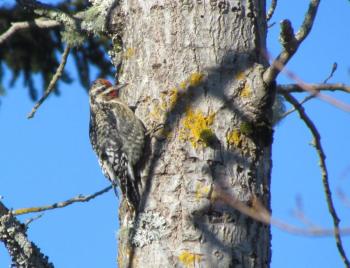 During this year’s count, Jeff and his two fellow birders tallied 43 species including 4 that were new to count. This yellow-bellied sapsucker was one of them. Courtesy of Jeff Wells.
During this year’s count, Jeff and his two fellow birders tallied 43 species including 4 that were new to count. This yellow-bellied sapsucker was one of them. Courtesy of Jeff Wells.
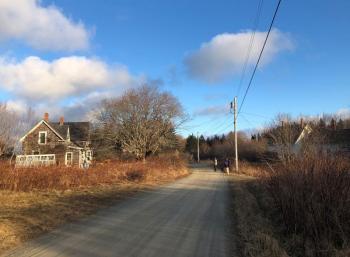 Although the temperatures were frigid, the opportunity to see birds in a beautiful place was enough to keep the author and his fellow birders warm. Courtesy of Jeff Wells.
Although the temperatures were frigid, the opportunity to see birds in a beautiful place was enough to keep the author and his fellow birders warm. Courtesy of Jeff Wells.
This week’s column was written by Jeff, for obvious reasons. Read on!
The sun was just coming up as three intrepid birders assembled last week in a brown wooden tiny house behind a hanger on the edge of the Knox County Regional Airport in Owls Head near Rockland. It was one of the colder days we’d seen this year (before this week’s even more frigid temperatures descended on the state). The taller one of your co-author pair (Jeff) was one of these three birders. The tiny house was the office of Penobscot Island Air, a small company that provides air service to some of the Maine islands just offshore including Vinalhaven, North Haven. Islesboro, and our destination, Matinicus Island.
Friend and fellow birder Rich climbed into the seat beside the pilot of the small air taxi, while Mike and I occupied the two remaining seats in the back as we took off for the 12-minute flight over to Matinicus Island, an island about two miles long and a mile wide that lies about 20 miles offshore. I started doing an official National Audubon Society Christmas Bird Count here on the island in the 2005-2006 season (the Christmas Bird Count period runs from mid-December of one year to early January of the next). The count went on uninterrupted for 15 years from that first one until last year, when Covid considerations caused us to skip a year.
It felt good to be back on the island as we clambered awkwardly out of the plane and onto the hard-packed frozen dirt runway tucked in among the dark green spruce forest on the north end. As we descended and circled the island, we noticed the sea smoke over the water that only forms under very cold temperatures. Still, the bite of that icy wind unexpectedly took our breath away and caused us all to pull out more warming layers from our packs.
It wasn’t long, though, before some brisk hiking started to bring warmth back into the extremities. Then we started seeing birds, which always warm a birder—at least enough to me make one forget the tingling fingers and toes. We trekked down to the harbor and looked out to sea with our scopes, but the sea smoke, waves, and wind kept us from finding much for ocean-loving birds; very few sea ducks and loons were visible, and there were no grebes or gannets.
Birds on land, though, were more plentiful and interesting. Apparently, the milder temperatures that had prevailed most of the early winter season had allowed a number of species to persist on the island. We found white-throated sparrows, song sparrows, and dark-eyedjuncos along with northern flickers and yellow-rumped warblers—all species that we have found quite regularly on the Matinicus Island Christmas Bird Count over the years. More surprising, and a first for the count, was a yellow-bellied sapsucker that paused in the sun to show off its red forehead and throat on an aging aspen tree whose bark was decorated with golden lichens.
Later, down in the brush along the shore on Harbor Point Road, we detected another first for the count: a Lincoln’s sparrow, whose normal wintering range reaches its closest point about a thousand miles distant. We spied a flock of black-masked cedar waxwings just around the corner from the school and were pleasantly surprised to find a handful of the larger bohemian waxwings among them.
We met some wonderful people on the island, too. The school teacher and his wife and family offered us hot chocolate and told us about the remains of snowshoe hares that might have been preyed upon by a snowy owl that had recently taken up residence on the island. Paul and Eva offered up a place to warm and rest, and Paul joined us as we hiked down to the south end in the afternoon.
As we tramped back from the beach that looks out toward Criehaven Island and beyond to Matinicus Rock, we bumped into another bonanza of birds in a brushy old field. A big, reddish fox sparrow popped up in an alder swale, then a tiny ruby-crowned kinglet with its white eye ring appeared—both also firsts for the count. As we rounded a corner, a beautiful snowy owl jumped up from the grass and glided away.
By the time we marched back to the airport in the late afternoon, we had tallied more than seven miles on our tired legs and we had found 43 species—about average, it turns out, for the 16 years of the Matinicus Island Christmas Bird Count. Over those 16 years we have now found an amazing 90 species of bird on these winter counts on this little outpost in the Atlantic. I’m already looking forward to next year to see what mystery and adventure will await there!
Jeffrey V. Wells, Ph.D., is a Fellow of the Cornell Lab of Ornithology and Vice President of Boreal Conservation for National Audubon. Dr. Wells is one of the nation's leading bird experts and conservation biologists and author of the “Birder’s Conservation Handbook.” His grandfather, the late John Chase, was a columnist for the Boothbay Register for many years. Allison Childs Wells, formerly of the Cornell Lab of Ornithology, is a senior director at the Natural Resources Council of Maine, a nonprofit membership organization working statewide to protect the nature of Maine. Both are widely published natural history writers and are the authors of the popular books, “Maine’s Favorite Birds” (Tilbury House) and “Birds of Aruba, Bonaire, and Curaçao: A Site and Field Guide,” (Cornell University Press).

